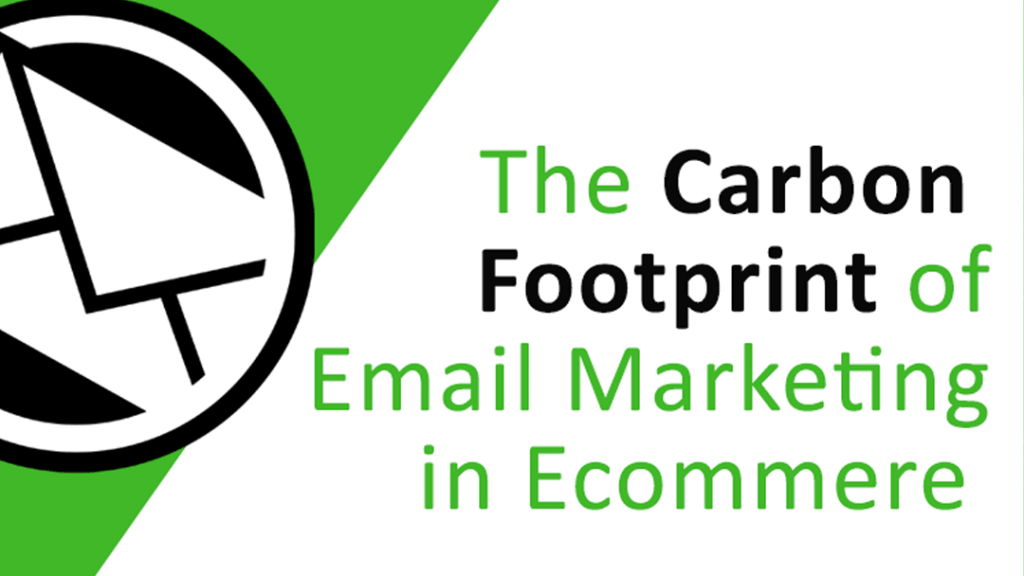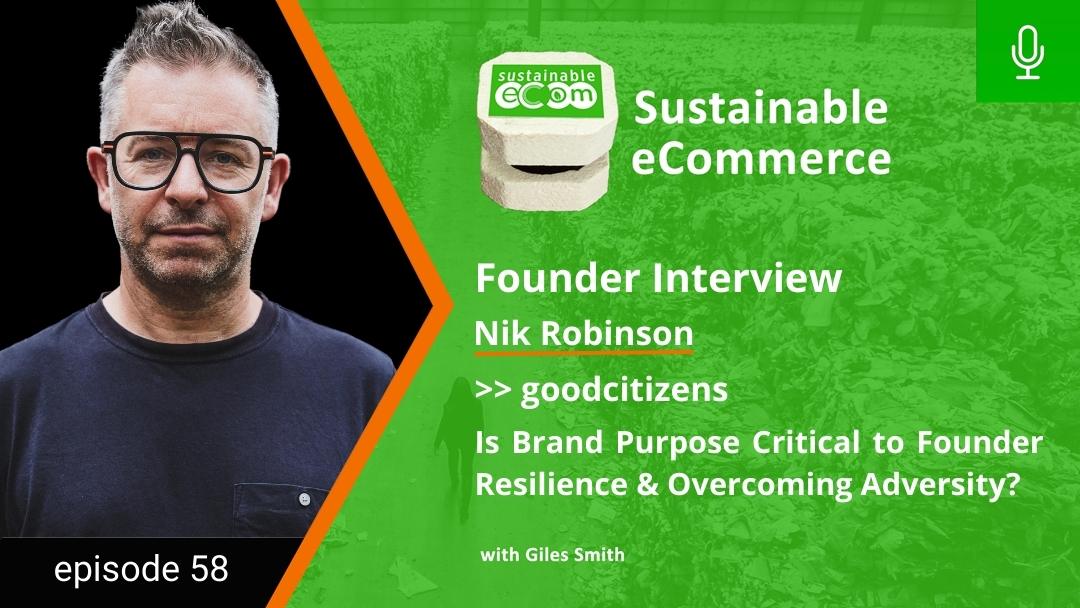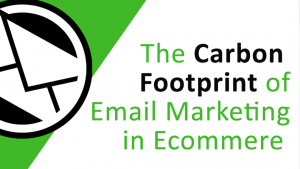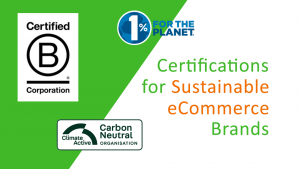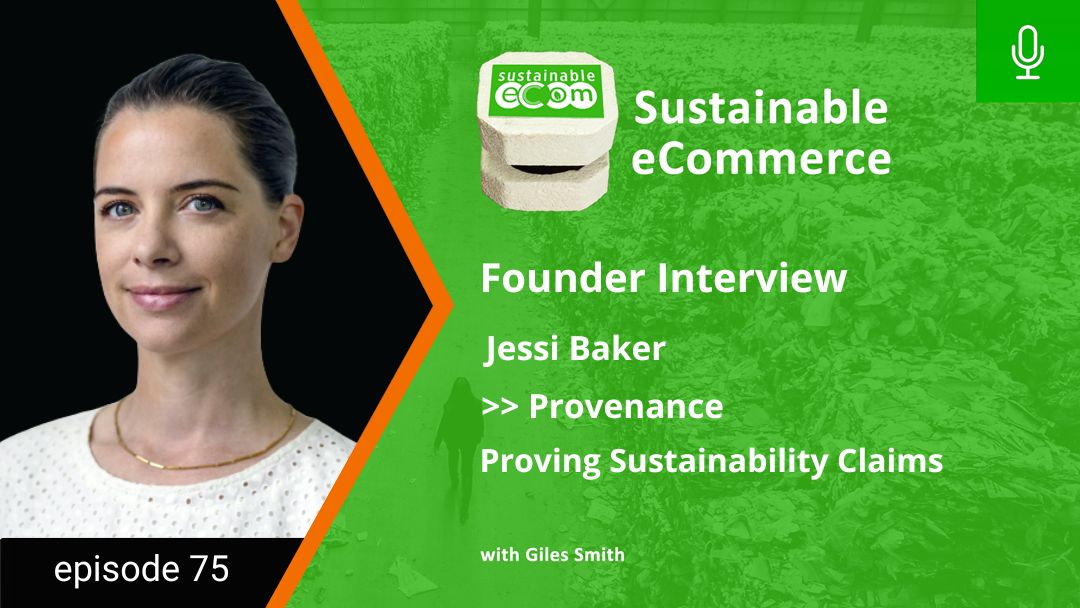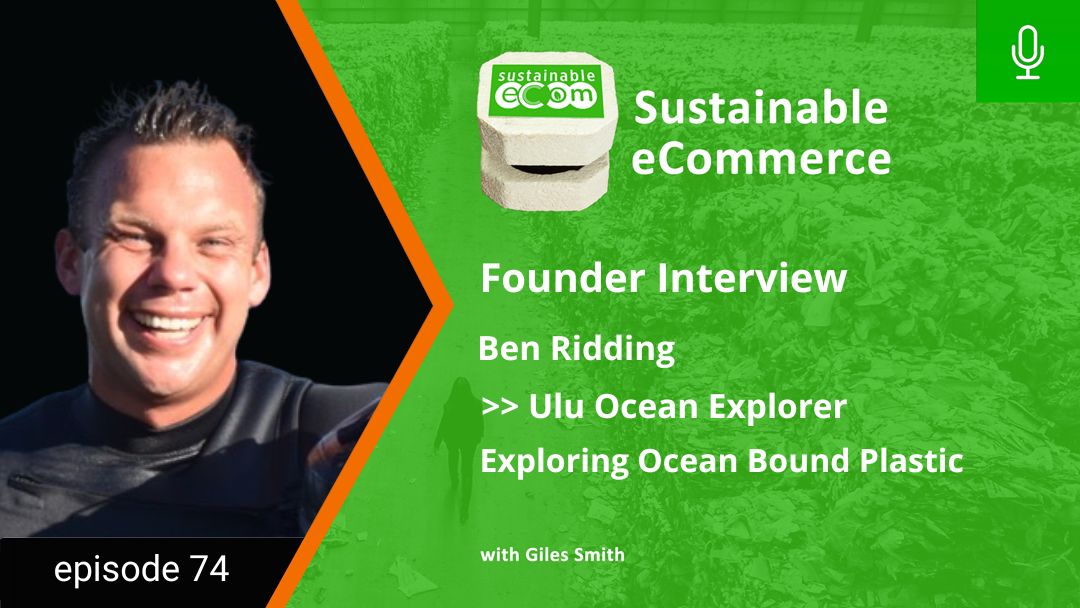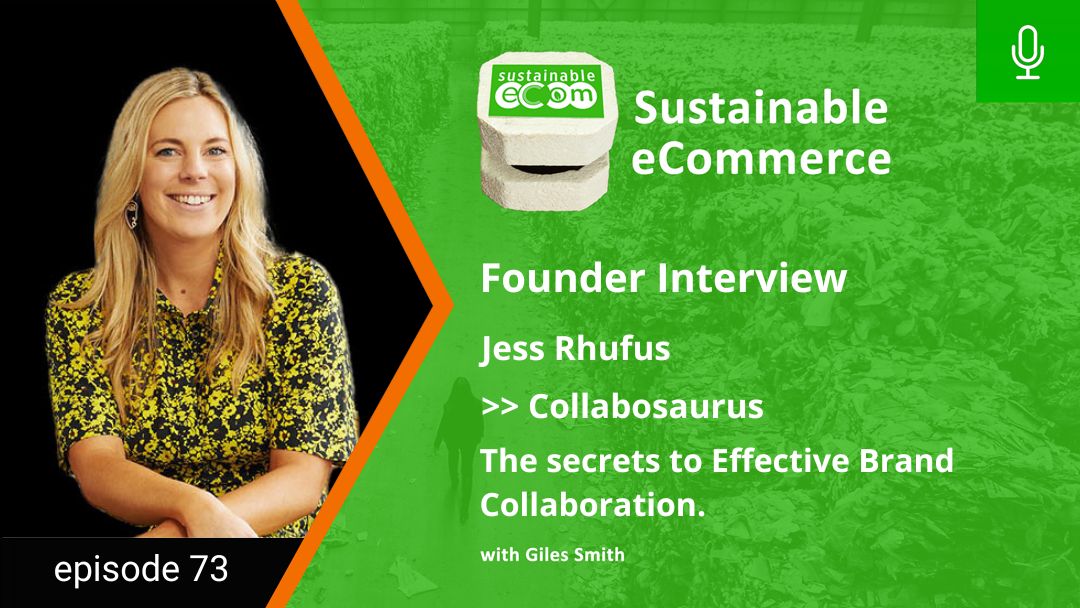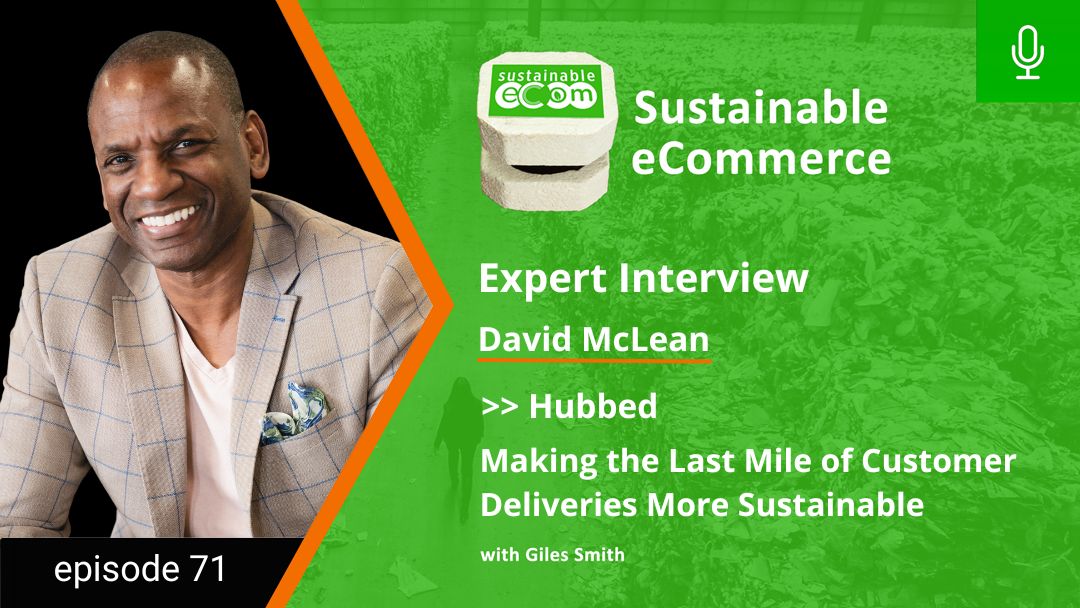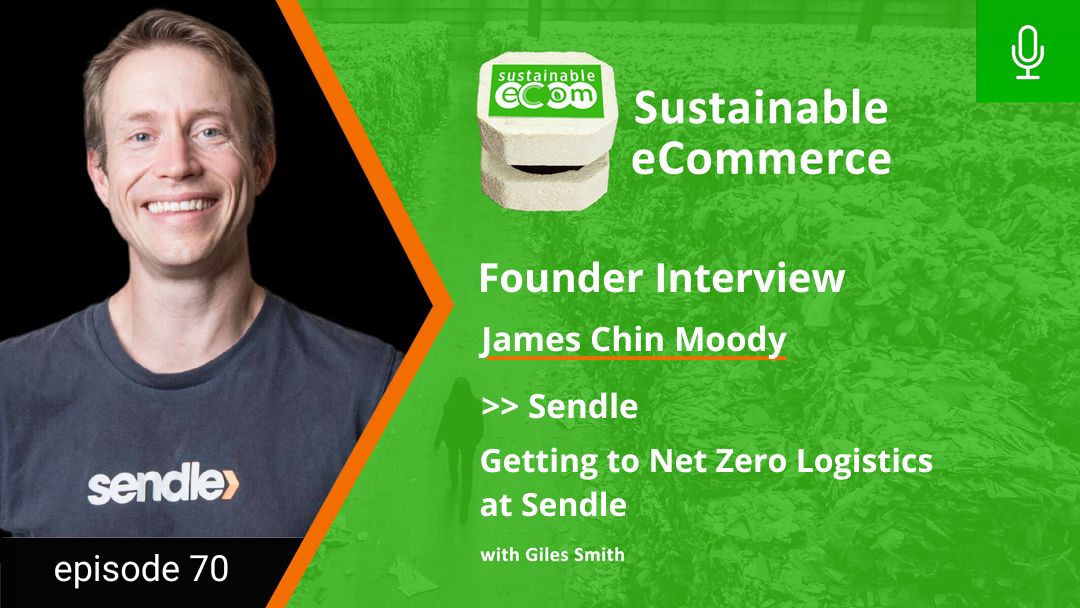Email has a justifiably long and rich pedigree in digital marketing for ecommerce brands. As other channels such as SMS, Messenger & Whatsapp have ebbed and flowed over the past decade, email has remained a constant go-to. It’s a brand’s core audience. It’s generally the most reliable source of returning customers and therefore one of key profit channels for an online business. It also has an eye-opening carbon footprint!
Brands are almost routinely guilty of treating their size of their email list like a sort of badge of honour. I liken it to stamp collecting. Bigger is seen as better. Quantity does indeed have a quality all of its own.
But having more active email subscribers is certainly better than simply having a big list when it comes to building your brand.
If you have an email list of 100,000, but only 20% actually open your emails, you’re paying your CRM provider to host a list 5X larger than you actually need!
Sure, a potential buyer for your brand will probably love to see a 500,000 email database…. Until they realise your open rate is 4%.
Besides which, constantly sending out a stream of unopened emails is ultimately going to hurt your deliverability.
So, it is indeed important (for cost efficiency if nothing else) for all brands to develop a strong email engagement strategy, and prune out subscribers who never open your emails.
But, if you’re a sustainable & conscious brand, there is a very real tangible environmental benefit to a carefully crafted email strategy and well maintained list.
The Carbon Footprint of Email Marketing
Back in 2011 Mike Berners-Lee (brother of Tim Berners-Lee, inventor of the internet) published a book called ‘How Bad Are Bananas’. There, he estimated the carbon footprint associated with sending an email.
Energy consumption was obviously the main component attached to his formulation. Power is required for data transmission and data storage of emails. By leveraging a metric called the carbon dioxide equivalent (C02e), he calculated that a standard text-based email emitted 4g of C02e. It is worth noting that this figure included the full lifecycle of emails, including things like recipient’s power usage to read it. With data centres like Google turning to green energy, 4 grams is probably an overestimate in 2022. There’s a new version of his book coming out later this year, so I’ll update this article then!
Back to the narrative. Four grams per email probably doesn’t sound like much. However, most modern CRMs allow you to produce glossy image-heavy HTML emails, or send PDF attachments. These can actually have over 10x the C02e impact, estimated at up to 50g!
Estimating The Carbon Footprint Of Your Email Campaigns
Armed with this new understanding of the carbon impact of email, let’s take a look at a couple of typical email campaigns.
Probably the most widely used campaign is the ‘transactional’ campaign, where you send out a series of confirmation emails. That would include ‘order received’, ‘order shipped’, ‘order delivered’ and (if you’re doing eCom well), ‘review request’ messages.
Let’s assume you’re sending out fairly lightweight, mostly text emails. Maybe with your logo and a few size-optimized images. Let’s also assume your brand is doing well, generating about 10,000 orders per month.
That being the case, your email campaign Carbon Footprint from each month’s sales would be:
(10,000 [the number of orders] x 4 [the number of emails] x 4g [the C02e of each email]).
That’s 160KG CO2 per month, or 1.92 metric tonnes of C02e per year. That’s roughly the same as a 1,000KM car journey.
Most brands using email as a core strategy will be doing a lot more than just transactional emails.
Let's a look at a small ecom brand. If we assume a reasonable mix of the top 8-10 email campaign strategies, an existing list of 100,000 subscribers and a monthly order count of 1,500, a brand’s email strategy may have an annual CO2e footprint of as much as 359 metric tonnes!
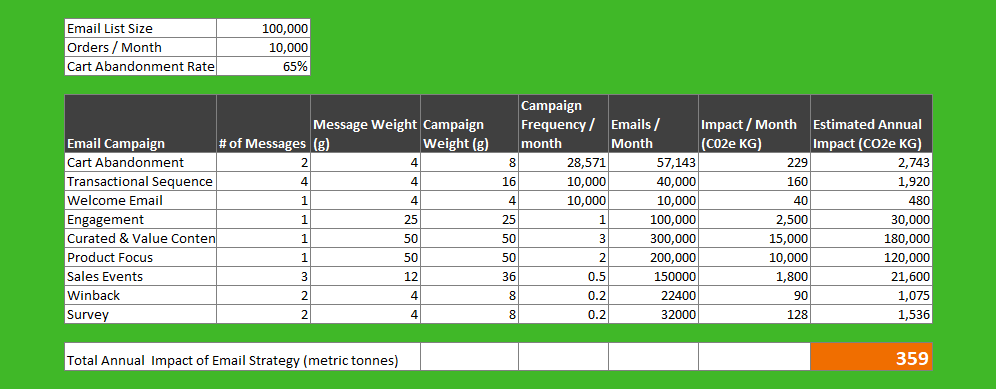
How Does Email Compare to Other Marketing Channels?
The good news is that email is a lot less impactful than post-based promotions. In fact, letter mail is about 50X more carbon intensive than email, and that’s not counting the many other environmental impacts related to paper production.
By contrast, SMS (which uses totally different technology to data transfer of email and instant messages) is estimated to have a CO2e impact of 0.002g to 0.014g. You can send somewhere between 350-2000 SMS messages for the same impact as a single standard email!
The next evolution of SMS called RCS is already widely used for marketing in the US and UK (not available from carriers in Australia / NZ yet). The key difference is that RCS is an internet protocol, so it’s likely to have a similar footprint to email and instant messaging).
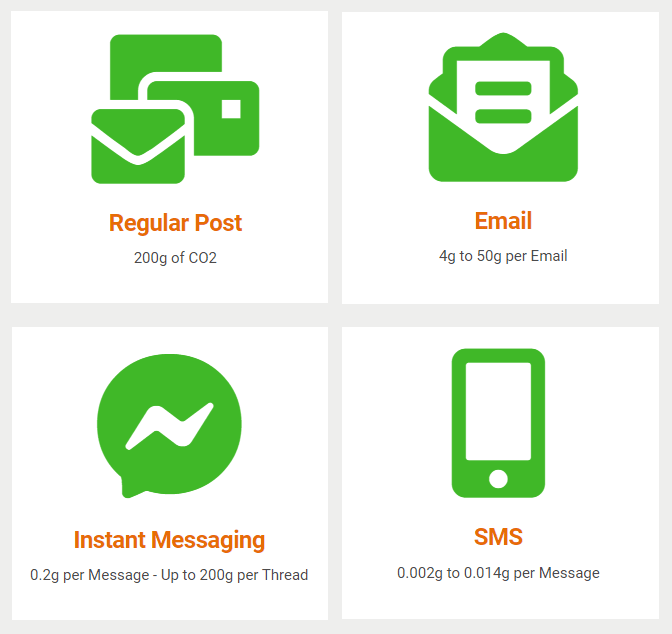
Instant messaging apps like Messenger, Instagram Direct Messages, Whatsapp etc, all use internet-based data transfer. There isn’t a lot of hard data on the Carbon Footprint of IMs as yet. The medium wasn’t really in use when Berners-Lee did is last analysis. Based on it using the same protocol and being mostly text-based, smsmode estimate the carbon footprint of IMs at around 0.2g to 9g. In other words, slightly lower than email. That being said, given these media are ‘chat’ orientated, a whole conversation (especially a bot-driven conversation) is actually likely to be a LOT more carbon intensive than even a rich email.
How to Minimize the Environmental Impact of Your Email Strategy
OK, I’m not for a minute suggesting you drop email marketing. It’s a critical part of an effective growth strategy for online brands.
But, armed with this knowledge there are things you can do to minimize your carbon footprint.
Here are my top X tips for reducing the carbon footprint of your email strategy (and coincidentally, these will all improve your campaign performance too!).
Tips for Minimizing Your Carbon Footprint from Email Marketing
- Try to reduce the number of images in your emails and perhaps reserve the image-rich content for value, product focus and engagement campaigns.
- Make sure the images you do include are properly compressed in file size. As we’ve seen, images are basically attachments, and can multiply the CO2e impact by as much as a factor of 10! There are plenty of free tools out there you can use to compress your images before sending, like TinyJPG
- Consider migrating to SMS for some of your time-sensitive campaigns, including abandoned checkout interactions and key sales campaigns.
- Don’t deliver PDF lead magnet attachments in the email. Instead, send a text link only. Most CRMs recommend you do this anyway. Taking this approach means that your carbon footprint is not increased by people who don’t even grab the bonus.
- Most of all, curate your email list to remove unsubscribes and non-engaged subscribers regularly, and ruthlessly. Over 90% of the total email strategy carbon footprint is related to interaction with your list. Referring back to the model above, you can probably reduce your footprint by 70% if you simply remove the people from your list who are not active users anyway!
- Last but not least – conduct an audit of your strategy to give yourself a benchmark. If you like, download the free Ecommerce Email Carbon Modelling tool we’ve developed to help you get a handle on your current position, and update it as your business grows to see how you’re tracking!
And yes, the download will be available as a link from your email inbox, not as a direct attachment!
Please note that the guide is meant as a quick yet powerful tool for giving you an initial benchmark. For a more detailed analysis on optimizing the effectiveness of your email marketing strategy vs its Carbon Footprint, book a Free Strategy session to see how we can help.

